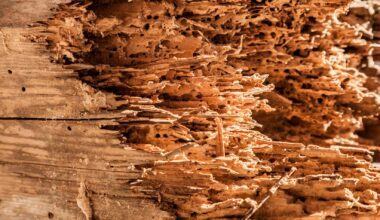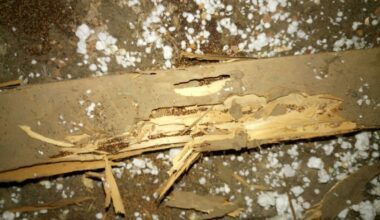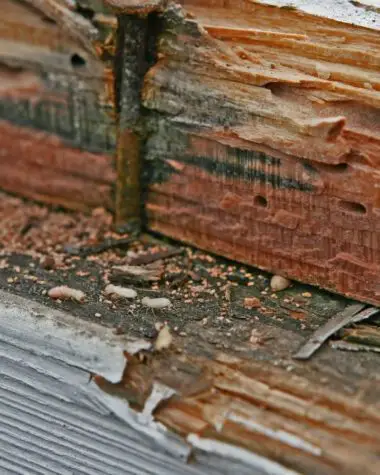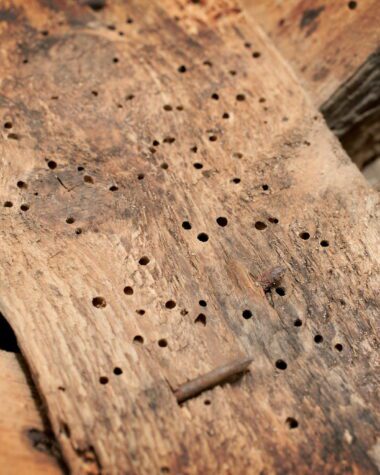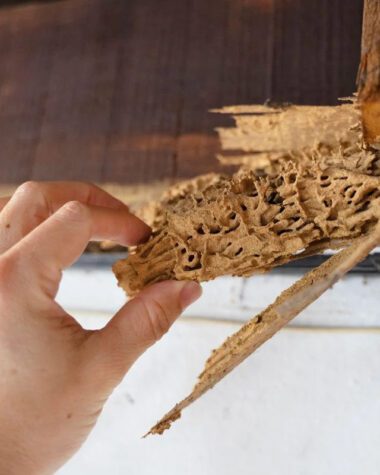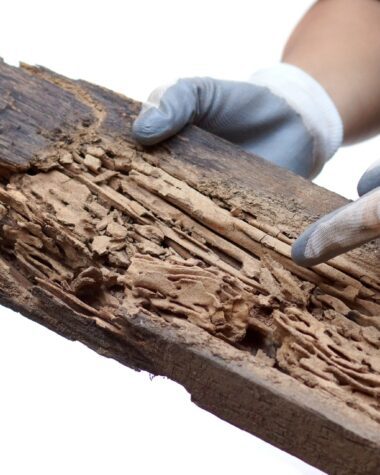Wood roaches are often mistaken for their appearance, the same as American roaches. So, homeowners usually ignore the signs that a possible wood infestation is happening on their property. But these wood roaches are skilled scavengers that can invade your structures.
Although wood roaches do not cause serious damage to your woodwork, they are considered a threat since they spread disease by walking over surfaces and contaminating your furniture and wood structures with droppings and saliva.
Here’s a complete guide when dealing with wood roaches and useful tips to prevent wood roach infestation in your area.
What is the Biology of Wood Roaches?
Identifying a wood roach from other cockroaches may seem hard, but a few hints can actually help you. Wood roaches are usually chestnut brown in color. They have a novel and fat body, spiny legs, and long antennae. They are slightly smaller than American Cockroach and measures about 3/4 to 1 1/4 inches long.
Mature wood roaches appear tan due to their wing color, especially in males. These adult roaches are often recognized by their transparent or pale creamy white stripe extending on the front wings.
Female wood roaches can produce 950 eggs yearly. Eggs are hatched in the summer and mature in the following spring. Once hatched, the larvae will grow into adult wood roaches that are present and active from May to October. But, their life cycle can only last for two years.
What Causes Wood Roach Infestation?
Wood roaches primarily eat organic materials. Their food sources include decaying tree branches or leaves, dead animals, and decomposing wood timber. When scavenging, wood roaches often get attracted to certain conditions, such as exposure to light, decaying matter, a moist environment, and other unhygienic conditions.
Your property can be vulnerable to roach attack if certain conditions are conducive. In most cases, wood roaches can be seen in automobiles’ headlights around wooded areas during dusk. The lights mostly attract male wood roaches. They become active during winter and thrive in firewood or moist areas.
Wood roaches don’t usually come indoors unless carried inside the house on an infested firewood, or when the weather outside is unsafe for them, they tend to hide inside a shelter. Unaccustomed to living indoors, wood roaches typically die or starve inside homes and other well-ventilated structures.
During reproduction, wood roaches typically require consistent humid environmental conditions like moist wood piles, loose bark, and decaying logs. Female roaches deposit their eggs in outdoor places that are safe from predators.
So you must be careful when storing your firewood because it is the most common place where roaches lay eggs. Be sure your firewood storage is at least 20 feet away from your home or your wooden structure and furniture to avoid an infestation in other good wood.
What are the Threats of Wood Roaches?
Wood roaches infest wood structures, but they do not cause severe damage. The only threat they pose is the spread of diseases and infections that can be transferred to humans who come in contact with infested wood.
An uncontrollable infestation around your area can cause serious health risks. Although wood roaches do not spread lethal diseases, they can cause illnesses by contaminating your area with their fecal matter, saliva, and bacteria or infections they get from sewage, trash, and other dead animals.
Also, wood roaches cast skin that can trigger asthma and allergy in sensitive individuals, including children and the elderly. As wood roach infestations grow around homes, the shed skin and fecal matter particles can get into the air and cause breathing problems.
Wood Roach Control Recommendations
Because wood cockroaches do not permanently establish themselves indoors, their presence in your home can only last for a few weeks, especially during spring. Strict pest management or chemical control measures aren’t always necessary.
However, if the infestation is severe and uncontrollable, you may contact a pest management professional to help you handle serious threats and avoid recurring infestations. For chemical treatment, the insecticides used in resolving cockroach infestation are similar to wood roach infestation but with limited benefits.
Also, exclusion techniques should be considered to prevent wood roaches from entering your home. You can start by sealing gaps, cracks, or openings using a caulking compound, plastic wood, or putty.
Additionally, you can start maintaining tight-fitting windows, doors, and screens. Make sure to store firewood piles far away from your house. Avoid carrying large quantities of firewood to reduce the potential breeding sites so insects won’t emerge in the house.
Another tip is to avoid using unnecessary lights at night, so you will not attract adult roaches that may fly towards them during mating season. If you find wood roaches inside, you can collect them with a broom, dustpan, or vacuum cleaner and discard them properly.
You can also consider fixing overflow drains and water leaks and taking overflow water away from your property. Also, keep drain traps capped or full. Remove all rotting leaves from the window wells. And lastly, move garbage cans away from moist habitats.
Key Points to Remember When Dealing with Wood Roaches
Treating firewood and all other areas in your place is not a practical solution because adult roaches can fly and travel over places. So, you can limit the use of toxic chemical fumes.
Occasionally, you can use chemical insecticide only on specific key areas like the outside of your property and any possible entry points, referred to as the “perimeter or barrier” treatment. Eco-friendly or non-chemical preventive measures are also preferred.
Ultimately, wood roaches just find their way out and look for moist areas, so they may never find a favorable environment inside the home. So you need to keep away any attractive breeding grounds by discarding damp things.
Conclusion
Wood roach infestation can occur inside the house but aren’t always needing immediate treatment because they need consistent moist conditions and usually find their way out. Just ensure not to carry a lot of firewood that may introduce wood roaches inside the home. If the infestation persists, it is best to contact a pest control expert to avoid possible health risks that can be dangerous to you and your loved ones.
You can easily avoid infestation if you look out for early warning signs. You can do the wood infestation inspection or call for professional help. Also, many useful tips and resources are available to help you learn more about wood infestation and its triggering factors. Discover guides and tips when handling and preventing infestation at home.

